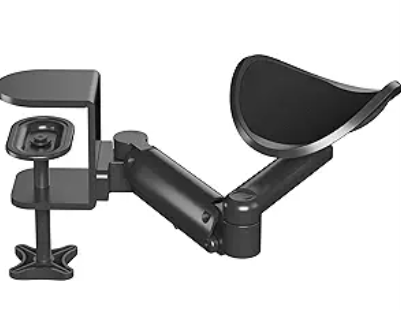Ergonomic Solutions for Working From Home
How to set yourself up for success with working from home with good habits, desk hygiene and product recommendations.
Do you have a job where you have to be sitting or standing in one place for hours at a time? Prolonged postures, especially sitting, are associated with decreased activity levels and therefore increased health risks including type 2 diabetes, cardiovascular disease, obesity, premature mortality and spine pain.
Our bodies evolved to move. In the last century, changes in society and technology have increasingly demanded repetitive movements, periods of long intense focus in prolonged positions at work and at home even after being inactive at work all day.
Based on research data, a good rule of thumb is to change your position or get up and move around every 30 minutes. You may need to shorten that even further if you have hypermobility related difficulty with sitting or standing still.
The 30 Minute Rule:
Do not be in any sustained position for more than 30 min at a time.
Rotate between sitting, standing or even a physio ball to not over fatigue or over stress your system in more than one position at a time.
Leverage Against Gravity - The 90 Degree Rule
When your spine is not aligned in neutral, your head and arms deviate forward, your pelvis tips forwards and your body weight is centered in the mid thighs, low back and base of the neck-top of the shoulder blades instead of being evenly distributed through the sit bones or feet.
This turns the transition points in the spine (head to neck, neck to rib cage etc) into fulcrums and exposes the muscle and fascia tissue at the spine junction points to a force called torque.
Anytime your head, limbs or spine are aligned anywhere other than at 0 degrees (directly in line) or 90 degrees (directly crossing) the line of gravity, joints and tissues are exposed to toque forces.
The head and arms are heavy! Increased torque forces trigger muscles to hold and build up tension in an attempt to create stability. Muscle strains and joint stiffness often happen in between these leverage points because they will function passively more like hammocks or suspension bridges than providing active lift of your body weight against gravity.
Use the 90 degree rule to help set up your work station to reduce torque and straining force exposure to your joints and tissues.
Tools Help Support Healthy Desk Hygiene:
Set a timer for 30 minutes to remind you to stand up, move around, reset and ideally change up your posture!
Adapt your current set up to add options for adjustable monitor and keyboard solutions for standing at your desk.
Adapt your current set up to add options for adjustable monitor and keyboard solutions for standing at your desk.
Add it to any existing chair with a back.
Add to any existing seat.
Helps to block the forward pelvic tilting/arching of back. Helps to hold onto the tailbone tuck when sitting. Add to any existing seat.
Posture Supports
My patients like the ones by alignmed the most. They also make a posture shirt. They are expensive, but if you are looking to buy one and buy the right one, this is it. I also include some less expensive alternatives in this list as well. In general, use it as a tool to help cue and not as a crutch to physically hold you in the right alingment.
Posture Bras
Best: By Alignmend
Similar design, less expensive posture bra
Posture Shirt
Patient Favorite Posture Braces
References
https://doi.org/10.1016/j.diabres.2012.05.020
https://doi.org/10.1016/j.pmedr.2015.03.011
https://doi.org/10.1371/journal.pone.0080000
https://doi.org/10.1016/j.amepre.2010.05.024
https://www.jacc.org/doi/epdf/10.1016/j.jacc.2019.02.031
https://www.sciencedirect.com/science/article/abs/pii/S0161475419304324
https://doi.org/10.1007/s00420-015-1031-4

















